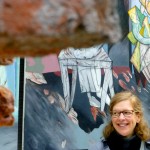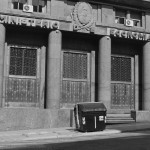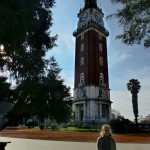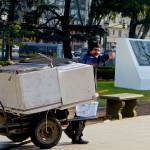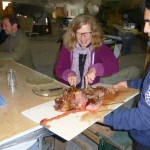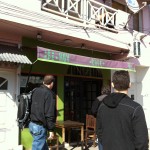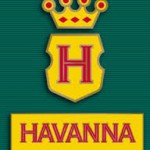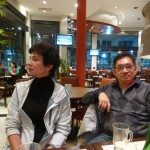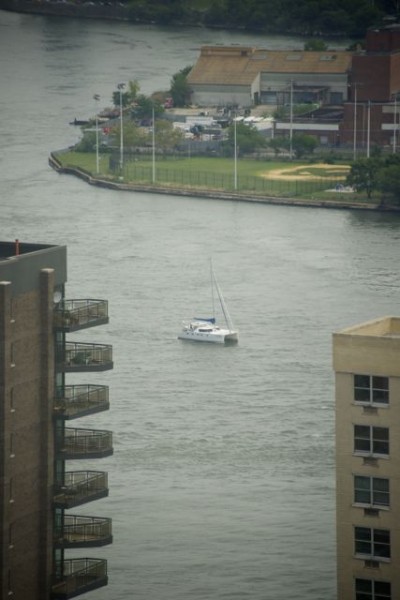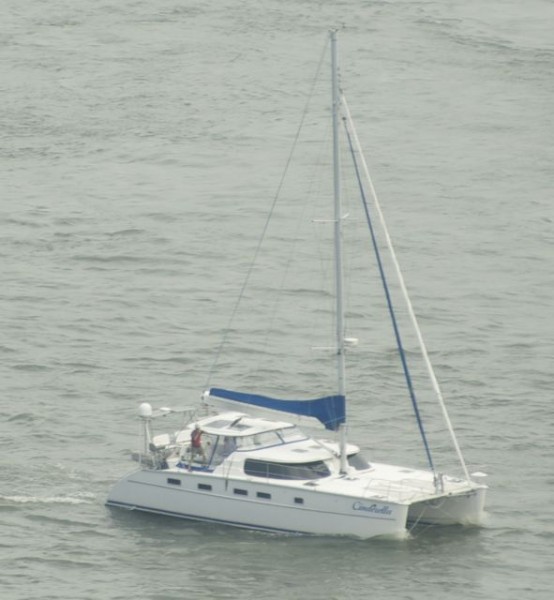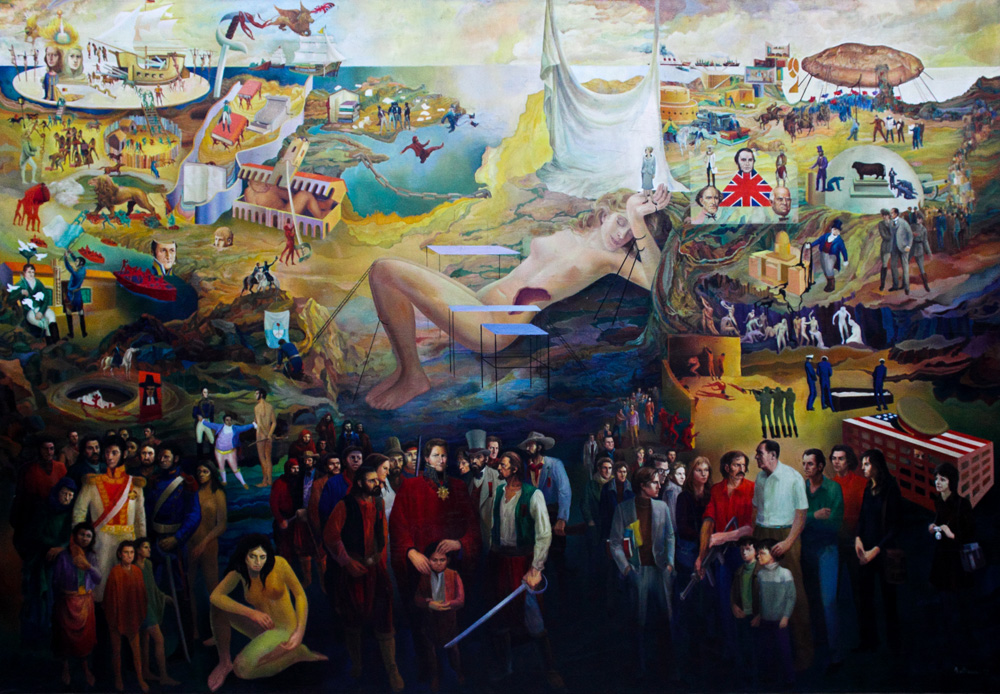
San Martín, Rosas, Perón
While visiting the Bicentenial Museum in Buenos Aires, I admired this painting that encapsulates the history of Argentina. I have tried to research the painting, but much of my source material is in Spanish and translated by Google. Eager to hear corrections from those who know better.

Queen Isabella
1510 – Arrival of the Spaniards in the Rio Plata – The upper left hand corner illustrates the arrival of the Europeans. Queen Isabella and Columbus are depicted above the caravelle. However, neither one visited Argentina. The corpses are of the indigenous population to whom the European diseases were more potent than Spanish horses or swords. This Revisionist view postulates that the arrival of the Europeans ruined the Americas. It is easy to support this view as disease, war and other oppressions destroyed much of the original society. One art critic disagreed with revisionism. stating it discounts the benefits and progress of current Argentine society. The critic asks revisionists “to wear a loin cloth of the pre-european days”. I hear the art critic’s point but it seems rather out of touch and self-serving. Furthermore, who knows how the cultures of the Rio Plata would have developed without European involvement? Enough of my soapbox on a topic I know very little about. Back to “reading” the painting.
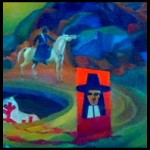
Tupac Amaru
1572 Tupac Amaru is killed – Further down along the left of the painting is a pilgrim-esque symbol which speaks to the connections the Spaniards had with some of the indigenous people (San Martin on horseback with the Incan leader Tupac Amaru) Túpac Amaru (Incan leader) was falsely convicted of murder and sentenced to a beheading. Before his execution, Catholic clerics pleaded that the Incan be sent to Spain for a trial, instead of being executed. Some have argued that Viceroy Toledo, in executing a head of state recognized by the Spanish as an independent King, exceeded his authority and committed a crime within the political ideas of his own time.
So far the painting is critical of the major figures in Argentine history, but I doubt any former colony would fair much better.
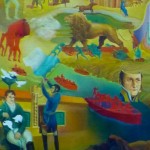
1807 English Lion and 1812 Flag Creator
1807 English annex Buenos Aires – The Lion symbolizes the British invasion, a turning point in Argentine history. The British were repelled by Creole forces. I thought Creole was a New Orleans bayoux culture, but in an Argentine context it refers to a person of 100% Spanish descent who was born in Argentina. This is important to the story since the Spaniards (born in Spain) held more of the important positions in early Argentine society than the Creole. When the Brits came to invade, the Spaniards fled but the home-born Creole stayed to fight. After this win, much of the Spanish leadership was sent home and the colony garnered more independence.
1810 Revolution – The painting now illustrates the 1810 May revolution. Spain and France are at war and the French have taken control of much of Spain. This was the beginning of the war of independence for the entire South American continent. I suppose the logic was something like this: Spain lost control of their own country to the French, so why should they continue to control South America? Not bad logic in my opinion. You may see the avenue name 25 de Mayo, or Plaza de Mayo in BA and other towns. 25th Mayo, 1810 is the Día de la Revolución de Mayo, when Buenos Aires ousted the Spanish.
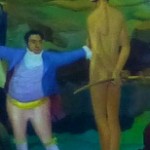
Naked San Martin
Near the center of the painting there is a naked guy next to a man in a blue suit. Controversially, the artist painted San Martin, leader of an attack on Chile via the Andes, naked to symbolize the lack of support Buenos Aires gave San Martin. San Martin is famous in Argentine history for his brave efforts to free the continent of the Spanish and for the “Crossing of the Andes” military campaign to out the Chilean royalists in 1817.
1812 Argentine Flag created – On the left edge of the painting is man in a green jacket with peace birds on his head. This is Manuel Belgrano who is credited with creating the Argentine flag (good job) and one of the main Libertadores of the country. His full name if you ever needed to greet him formally is Manuel José Joaquín del Corazón de Jesús Belgrano. I bet his friends called him Manny. Another Libertadore leader, San Martin, is painted nearby with a flag. The pair are Argentine versions of Betsy Ross and George Washington. Another key date, 9th July, 1816, is when the Argentines declared independence from Spain; this is also commemorated in many towns with Avenida 9 de Julio.
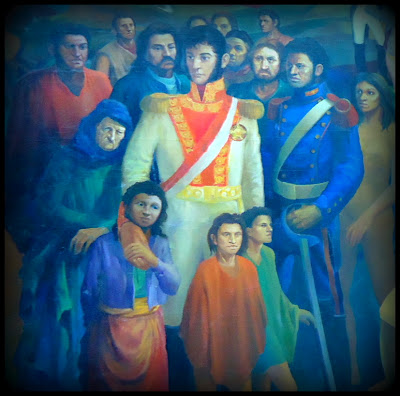
José de San Martín appears a third time in the painting, accompanied by a village. I suppose that says he was either a man of the people or a village people? San Martin receives much credit for leading troops to free large parts of Argentina from Spanish rule.
1833 British control Las Malvinas / Falklands At the top of the painting the artist shows the British warships headed for an island which harkens clearly to the sensitive topic of the islands. I will steer clear of this since both countries have been wonderful hosts to me in my travels. I have no dog in this fight and less understanding of the long history. But do have an interest in visiting the windswept islands.
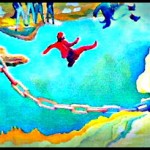
Politics of Trade
1845 Anglo-French Blockade of Argentina – Buenos Aires has grown because of its power as a port city. Oddly, the Spanish originally decreed that all of the goods from their South American colonies should travel over the Andes via horseback to Lima and then from Lima to modern-day Panama by sea and finally over land again through Central America. The goods waited in Cuba for a protected delivery to Spain. This seemingly insane plan was needed to avoid looting by French and English ships. Clearly, few goods followed this path and Buenos Aires became a smuggler’s paradise. By the 1840s, BA’s role as a major port for silver, cow hides, and other products was well established. Juan Manuel Rosas, leader of Argentina, had impossed protective tarriffs to enhance the fledgling Argentine economy. Britain and France did not comply and began trading goods inside Argentine rivers. This prompted a 5-year blockade, which Argentina was able to survive. Eventually Britain and France signed an agreement acknowledging Argentine river sovereignty. The chain in the painting is Argentina preventing European ships from sailing upriver and next to this is an Argentine soldier kicking an English merchant. This is a rather nationalistic painting, but what else would you expect in a a country’s National museum?
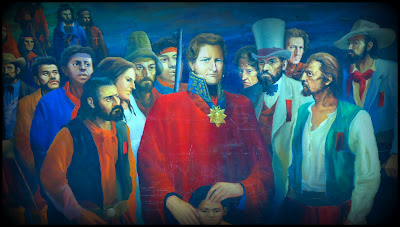
Rosa with the lower classes
Juan Manuel Rosas (1793-1877) was no small figure in Argentine history. He controlled the country with a totalitarian fist. Like any dictator he had a penchant for the dramatic. The Argentine governor mandated that the slogan “Death to the Savage Unitarians” be inscribed at the top of all official documents. Anyone on the state payroll was obliged to wear a red badge with the inscription “Federation of Death”. Every male was supposed to have a “federal look”, i.e., to sport a large mustache and sideburns. Many resorted to wearing false mustaches. The red color became omnipresent in the province of Buenos Aires. Soldiers wore red chiripás and their horses sported red accouterments. Civilian males wore a red waistcoat, red badge and red hatband while women wore red ribbons and children donned red school uniforms. Building exteriors and interiors were also decorated in red.
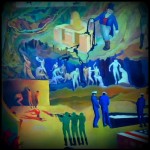
20th Century – Oil
Twentieth Century – This portion of the painting shows some famous moments from 1900 to 1940. In 1929, Argentina was wealthy, but the prosperity ended with the worldwide Great Depression of 1929. In 1930, a military coup, supported by the Argentine Patriotic League, forced Hipólito Yrigoyen from power. Support for the coup was bolstered by the sagging Argentine economy, as well as a string of bomb attacks and shootings involving radical anarchists. The attacks alienated moderate elements of Argentine society and angered the conservative right, which had long been agitating for decisive action by the military forces. The military coup initiated the period known as the “Infamous Decade”, characterised by electoral fraud, persecution of the political opposition and pervasive government corruption. The most famous (and perhaps most symbollic of anarchism’s decay in Argentina at the time) action was the execution of Severino Di Giovanni, who was captured in late January 1931 and executed on the first of February of the same year.
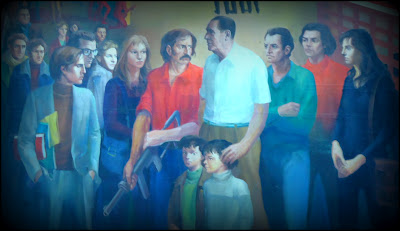
President Peron
Peron 1940-1974
Peron was elected President of Argentina three times, serving first from June 1946 until September 1955, when he was overthrown by a coup d’état, and then from October 1973 to July 1974. During his first Presidential term, Perón was supported by his second wife, Eva Duarte (“Evita”), and the two were immensely popular among many Argentines. Eva died in 1952. Peron lives on today via his politcal party known as Peronists. I am still trying to understand Peron but it seems like he was part FDR. He pushed the state to expand the social welfare net, but at some point the economy could not handle the burden and went into a severe contraction. This has been an all too common outcome of good intentions.
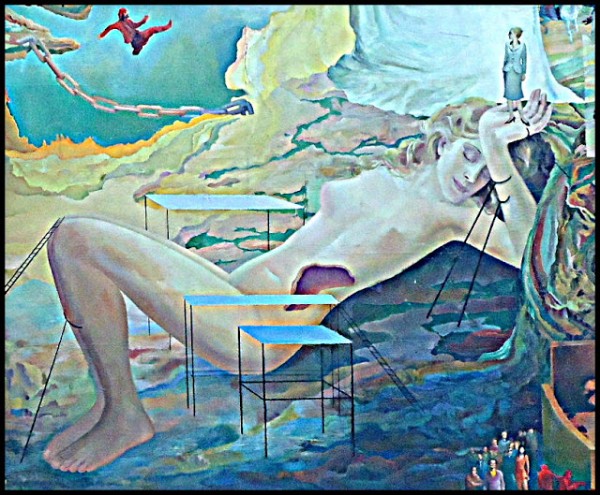
- State of Argentina
The woman lying in the center of the painting is the State of Argentina. She is wounded and staked down. In her hand is Eva Peron. Is Eva saving the state? Why is the state missing part of her abdomen? Lost territory, lost citizens?




